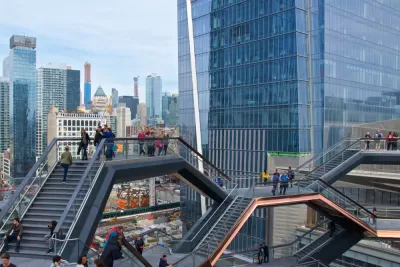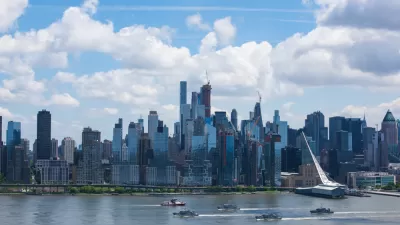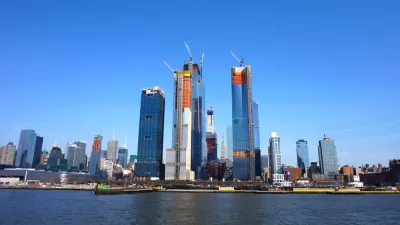In-depth reporting on the history and present of Related Cos., the developer of several of the largest mega-developments in the United States.

From Chicago to New York to Los Angeles to the Silicon Valley and more, various wings of the Related Cos. are developing some of the most ambitious, most expensive, and most conspicuous projects in the country.
Patrick Sisson writes of the confluence of factors that have brought the development market to this moment to preview the role of Related in it all:
More than a decade into the current economic cycle, demand for downtown real estate hasn’t abated. Since most of the easily developable land has been bought and sold many times over, cities and developers have been giving more complicated locations a second look.
The remaining areas ripe for redevelopment—such as waterfronts, rail yards, and huge abandoned industrial sites—are generally in prime locations and well-connected from an infrastructure perspective. But developing them requires expertise, capital, and planning. It requires being able to wait out years of approvals and planning meetings and navigate bureaucracy, to think big and master plan entire new neighborhoods, and to risk money for what can be a decade-long process.
With those complications in mind, Sisson places the Related Cos. at the center of the entire historical moment, with massive projects like Hudson Yards in New York City and The 78 in Chicago. "Owned by Stephen Ross, whose net worth is pegged at $7.7 billion by Forbes, Related, and its wide array of domestic and international divisions, has over $50 billion in real estate assets," according to Sisson, who provides a history of Ross and the company while also detailing some of the signature projects in the company's portfolio, and their potential to impact the cities where they'll be built.
FULL STORY: How the megadevelopment era shapes cities today

Study: Maui’s Plan to Convert Vacation Rentals to Long-Term Housing Could Cause Nearly $1 Billion Economic Loss
The plan would reduce visitor accommodation by 25,% resulting in 1,900 jobs lost.

North Texas Transit Leaders Tout Benefits of TOD for Growing Region
At a summit focused on transit-oriented development, policymakers discussed how North Texas’ expanded light rail system can serve as a tool for economic growth.

Why Should We Subsidize Public Transportation?
Many public transit agencies face financial stress due to rising costs, declining fare revenue, and declining subsidies. Transit advocates must provide a strong business case for increasing public transit funding.

How to Make US Trains Faster
Changes to boarding platforms and a switch to electric trains could improve U.S. passenger rail service without the added cost of high-speed rail.

Columbia’s Revitalized ‘Loop’ Is a Hub for Local Entrepreneurs
A focus on small businesses is helping a commercial corridor in Columbia, Missouri thrive.

Invasive Insect Threatens Minnesota’s Ash Forests
The Emerald Ash Borer is a rapidly spreading invasive pest threatening Minnesota’s ash trees, and homeowners are encouraged to plant diverse replacement species, avoid moving ash firewood, and monitor for signs of infestation.
Urban Design for Planners 1: Software Tools
This six-course series explores essential urban design concepts using open source software and equips planners with the tools they need to participate fully in the urban design process.
Planning for Universal Design
Learn the tools for implementing Universal Design in planning regulations.
Ascent Environmental
Borough of Carlisle
Institute for Housing and Urban Development Studies (IHS)
City of Grandview
Harvard GSD Executive Education
Toledo-Lucas County Plan Commissions
Salt Lake City
NYU Wagner Graduate School of Public Service





























